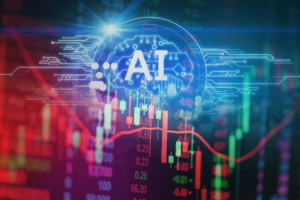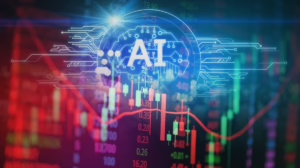Beyond the Buzzword: Clarifying the Meaning of Artificial Intelligence
Introduction
In recent years, the term “artificial intelligence” (AI) has permeated various aspects of daily life, from smart assistants in our homes to sophisticated algorithms that influence our choices in shopping, entertainment, and even social interactions. Yet, despite its prevalence, many people still struggle to understand what AI truly encompasses beyond its buzzword status. This article aims to clarify the concept of artificial intelligence, exploring its history, definitions, applications, and implications for society.
The Genesis of Artificial Intelligence
Early Foundations
The notion of machines being capable of intelligent behavior dates back to ancient myths and folklore. However, the formal introduction of AI as a concept emerged in the mid-20th century. The term itself was coined in 1956 at the Dartmouth Conference by John McCarthy, Marvin Minsky, Nathaniel Rochester, and Claude Shannon, who aimed to explore ways that machines might simulate human intelligence through reasoning, learning, and problem-solving.
In the decades that followed, the field of AI experienced several cycles of optimism and disappointment, often referred to as “AI winters”—periods characterized by reduced funding and interest due to unmet expectations.
Breakthroughs in Computation
The resurgence of AI in the 21st century can be attributed to a convergence of several factors:
-
Increased Computational Power: The capability of computers has expanded exponentially. This development has not only allowed for more complex algorithms but also enabled the processing of vast amounts of data.
-
Big Data: The rise of the internet and the digital age has led to unprecedented quantities of data. Machine learning algorithms, a subset of AI focused on extracting patterns from large datasets, rely on this data to improve their accuracy.
-
Advancements in Algorithms: The development of new algorithms, particularly in deep learning, has transformed AI applications. Techniques such as neural networks mimic the human brain’s structure and function, enhancing AI’s learning processes.
Defining Artificial Intelligence
Broad Definitions
At its core, artificial intelligence can be defined as a branch of computer science that aims to create machines capable of performing tasks that would typically require human intelligence. This includes, but is not limited to:
- Perception: The ability to process and interpret sensory data.
- Reasoning: The capacity to draw conclusions, make decisions, and solve problems.
- Learning: The ability to improve performance based on experience.
- Natural Language Processing (NLP): The capability to understand and generate human language.
Types of AI
To further clarify the concept, AI can be categorized into several types:
-
Narrow AI: Also known as weak AI, this type focuses on specific tasks. Examples include personal assistants like Siri or Alexa and recommendation systems used by streaming services.
-
General AI: Often referred to as strong AI, this remains more theoretical. General AI would possess the ability to perform any intellectual task that a human can do, demonstrating true understanding and reasoning.
-
Superintelligent AI: A hypothetical form that surpasses human intelligence in virtually all aspects, including creativity, problem-solving, and social intelligence. While still a topic of philosophical debate and ethical concern, it has not yet been realized.
Applications of AI
Artificial intelligence has found applications across various domains, transforming industries and enhancing efficiencies.
Healthcare
AI systems are revolutionizing healthcare by:
- Providing diagnostic assistance through pattern recognition in medical imaging.
- Analyzing patient data for tailored treatment plans.
- Streamlining administrative processes, thus allowing medical professionals to focus more on patient care.
Finance
In finance, AI algorithms are used for fraud detection, risk assessment, and algorithmic trading. Machine learning models can analyze transaction patterns to identify anomalies, helping institutions safeguard against fraud.
Transportation
Autonomous vehicles represent one of the most ambitious applications of AI. Companies like Tesla and Waymo are developing self-driving technology that relies on real-time data processing, computer vision, and decision-making algorithms.
Customer Service
AI-driven chatbots and virtual assistants enhance customer service by providing 24/7 support, answering queries, and resolving issues without human intervention. These systems can improve customer satisfaction while reducing operational costs for businesses.
Ethical Considerations
Bias and Fairness
As AI systems are trained on existing data, they can inadvertently perpetuate biases present in that data. Questions arise about fairness, equity, and accountability, particularly in applications such as hiring processes or law enforcement.
Privacy Concerns
Given that many AI applications rely on personal data, concerns about privacy and surveillance have increased. Striking a balance between leveraging data for innovation and protecting individual privacy remains a critical challenge.
Job Displacement
The rise of automation poses questions about job displacement. While AI can enhance productivity and create new roles, it may also lead to significant shifts in the job market, necessitating retraining and support for affected workers.
The Future of AI
While the current capabilities of AI are impressive, many researchers believe we are still at the beginning of a long journey. The potential for future developments, including general AI and superintelligent AI, poses intriguing possibilities as well as ethical dilemmas that society must grapple with.
Collaboration Between Humans and AI
One promising avenue is the notion of human-AI collaboration, where machines augment human capabilities rather than replace them. This synergy could lead to advancements in fields like scientific research, where AI might assist in hypothesis generation or data interpretation.
Regulatory Frameworks
As AI continues to evolve, establishing regulatory frameworks that ensure ethical development and deployment will be crucial. Policymakers, researchers, and technologists must collaborate to define boundaries that protect individuals and communities while fostering innovation.
Conclusion
Understanding artificial intelligence extends beyond its hype as a buzzword; it involves recognizing its complexities, potential applications, and ethical implications. As AI continues to evolve, clarity in its definitions and applications will prove vital. This understanding is not just for experts in the field but for everyone, encouraging informed discussions about the role of AI in shaping our future.
References
- McCarthy, John, et al. “A Proposal for the Dartmouth Summer Research Project on Artificial Intelligence.” 1955.
- Russell, Stuart J., and Norvig, Peter. “Artificial Intelligence: A Modern Approach.” 3rd ed., Pearson, 2010.
- Bostrom, Nick. “Superintelligence: Paths, Dangers, Strategies.” Oxford University Press, 2014.
- Amodei, Dario, et al. “Concrete Problems in AI Safety.” arXiv:1606.06565 [cs.AI], 2016.
- Obermeyer, Ziad, and Emanuel, Ezekiel J. “Predicting the Future — Big Data, Machine Learning, and Health Care.” New England Journal of Medicine, vol. 375, no. 13, 2016, pp. 1216-1218.


























Add Comment